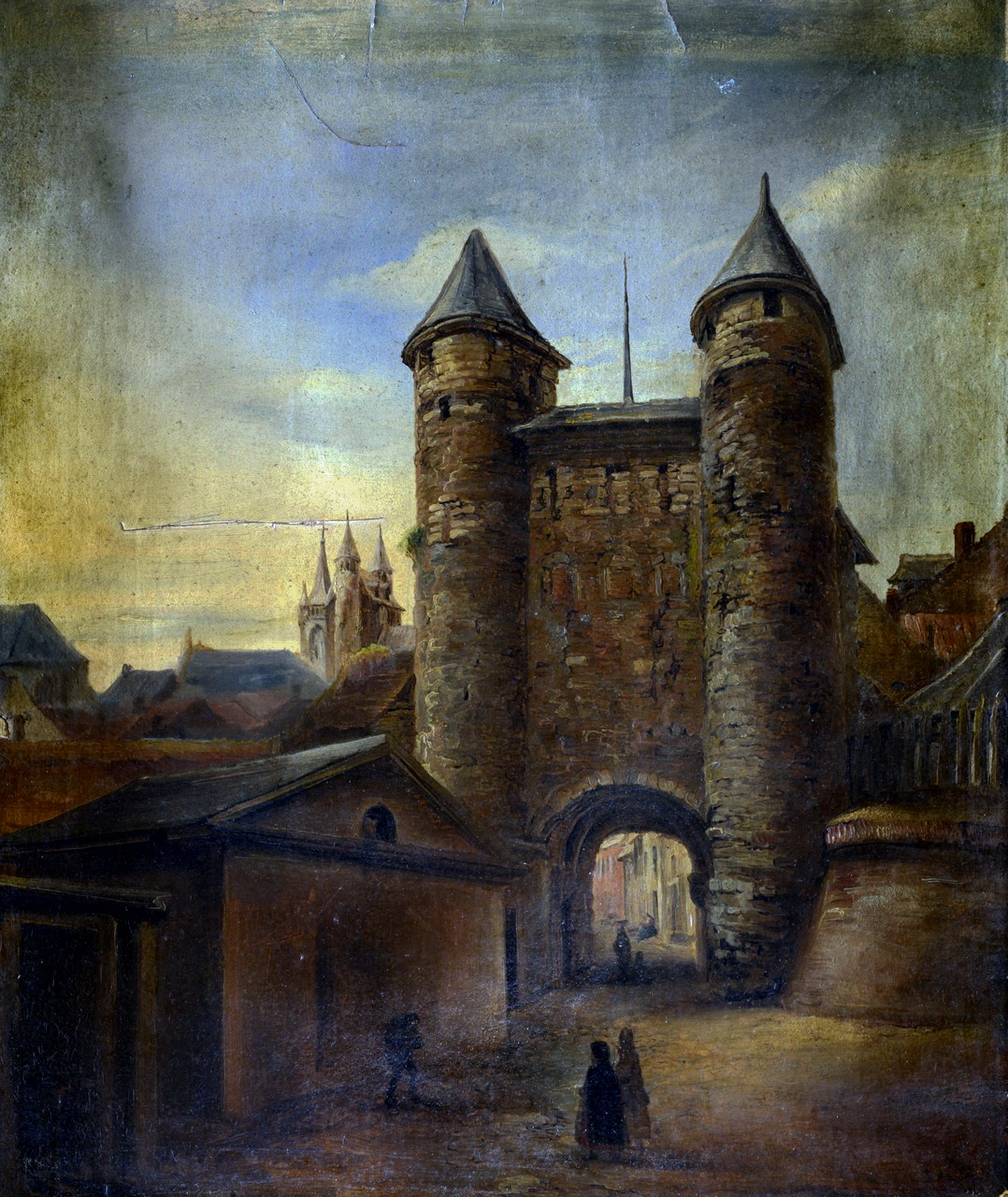Helpoort (model in the middle)
In the archetype of the late medieval city gate, it is linked to one or two towers that protrude semicircularly in front of the gate opening. Towers are important in a medieval fortress because from such a tower you can keep a good overview of what is happening outside the city wall and therefore also in front of the city gate. From the height you also have a greater range with weapons that were in use at the time. The jutting towers also have embrasures on the sides so that defenders can cover the area in front of the wall and also in front of the gate with bows and arrows. As with the Helpoort, if you have two towers next to the passage, then you can also fire on the outside of that passage from two sides.
 The city gate can be closed by means of two wing doors. In a fortress this usually happened during the evening during peacetime. Then inbound and outbound traffic was no longer possible until the next morning. One of the gull-wing doors often contained a small door, the so-called latch. Depending on the rules of the city council, pedestrians could still pass through the doorknob for some time until the gates were completely closed. If there was imminent disaster or if there were enemy troops in the vicinity of the city, the gates remained closed day and night.
The city gate can be closed by means of two wing doors. In a fortress this usually happened during the evening during peacetime. Then inbound and outbound traffic was no longer possible until the next morning. One of the gull-wing doors often contained a small door, the so-called latch. Depending on the rules of the city council, pedestrians could still pass through the doorknob for some time until the gates were completely closed. If there was imminent disaster or if there were enemy troops in the vicinity of the city, the gates remained closed day and night.
In order to be able to close the gate quickly in the event of an imminent situation, there was a portcullis, a fence consisting of latticework that the gatekeeper could quickly let down from above. That was a facility that was only used in emergency situations.
Outside the Helpoort flowed originally a branch of the river Jeker that served as a city moat. That means there was a drawbridge outside the gate. In an attack on the city, the bridge was raised and there was an additional closure of the gate opening.
Above the gate were a number of rooms and a so-called tit-cow or tit-cage. From that extension, defenders could literally sit on their heads through holes in the floor. These spaces were also necessary for the so-called organ work with which the portcullis could be operated. In the Middle Ages, the rooms above the gate were often inhabited by the gatekeeper, who, because of his function, was sometimes allowed to live there with his family.
Jos Notermans
October 2, 2021





